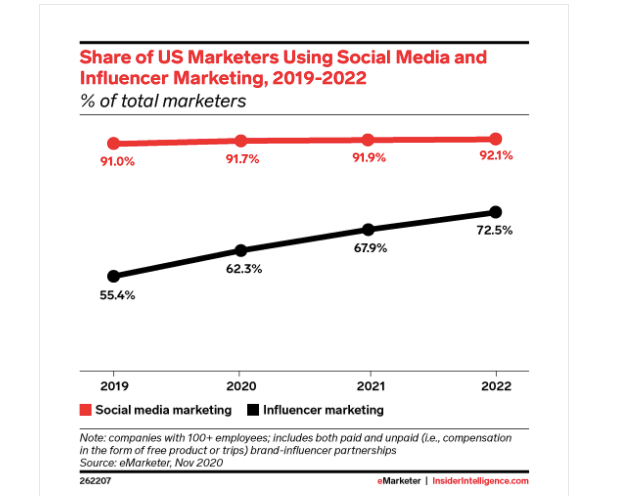Performance marketing strategies: best practices you should follow
Developing your performance marketing strategies will help you find new revenue opportunities and drive growth for your mobile app. You can also use this to find new ways to increase retention, Lifetime Value (LTV), and Return on Ad Spend (ROAS). 92% of marketing agencies are increasing the time, resources, and budget for automation integration. When practicing performance marketing strategies it is important to learn best practices that will help you achieve your goals. This guide is designed to help you with key areas of performance marketing strategies, including dynamic remarketing, influencer marketing, and Search Engine Optimization (SEO).
Performance marketing strategies
Here are three examples of performance marketing strategies that can be included as part of your overall strategy:
Dynamic remarketing
A benefit of performance marketing is the ability to personalize the user experience and optimize results. You can use the data you have acquired to practice dynamic remarketing. For example, if a user has left items in their cart in your e-commerce app you can target them and push them further down the funnel. For mobile games, this could be incentivizing users to complete the next level by offering them an extra life or discount on in-app purchases. Remarketing ads can be served in several places such as social media, search ads, and display ads.
Best practices for dynamic remarketing:
- Link your Google Analytics and your Google Ads account: When setting up Google Analytics it is important to link your Google Ads account. This means you can use all of the data you gather from Google Analytics and use it for dynamic remarketing.
- Bid strategically with your audience groups: You should place higher bids on high-value users, such as users who keep returning to your app. This also works in reverse: you can filter users who are not active in your app to avoid wasting your resources.
- Focus on quality product images: This can make a huge impact on the conversion rates for your dynamic remarketing ads. High-quality images that accurately show products, in addition to detailed views that may be necessary for quality checks, can give users the confidence they need to complete their purchase. You can also A/B test your product images for the best results.
Influencer marketing
Working with influencers is a smart way to reach your target audience and should be considered when developing performance marketing strategies for your brand. An eMarketer report on influencer monetization in 2021 found that “Brand partnerships are still the No. 1 revenue stream for most creators, but a growing number are also earning money through alternative means like affiliate marketing, sales of physical or digital products, and ads.” Although influencers are finding new ways to monetize, this is likely to supplement influencers’ paid partnerships.
This type of marketing can be included in your performance marketing strategy by affiliate programs and agreeing on performance-based rewards. For example, you can agree to a Cost-per-Click (CPC) business model to ensure that you are only paying influencers for the user activity. Moreover, you gain brand awareness with an influencer’s audience even if the Click-Through Rate (CTR) is low.
Influencer marketing best practices:
- Identify your targets: Just like any other type of marketing campaign, it is important to know your goals before spending on social media influencers. This ensures that your goals are measurable and can be optimized over time. The first step is to define whether this is a branding campaign or if you want to focus on Key Performance Indicators (KPIs) such as CTR and installs.
- Use influencer’s know-how to your advantage: While it is important to know what you want from an influencer, it is smart to have an open dialog with your chosen influencer to gain insights. They have become popular on social media for a reason: they understand what works for their audience and maintain authenticity to build trust. This is a valuable asset that can be leveraged for your campaigns.
- Explore a social media influencer’s feed before collaborating: Market research into what your chosen influencer stands for, and what type of content is usually on their feed, is critical. You may share a target audience but that doesn’t automatically result in shared values. Be thorough and know exactly what to expect before your brand is associated with an influencer.
Search engine optimization (SEO)
Creating a landing page and blog for your mobile app enables you to leverage SEO and have your branded pages ranking on search engines such as Google, Bing, and Baidu. This is one of the best performance marketing strategies for generating leads, sales, and increasing exposure. You can also target keywords to ensure that your target audience who are unfamiliar with your brand has an opportunity to find you through their online search. This is a data-driven practice that you can optimize further down the line.
Search engine optimization (SEO) best practices:
- To improve your search engine ranking, you need to use meta tags to increase exposure. This includes title tags and your meta description. This is the title and description users will see when entering a search term, so ensure that you use compelling, simple language that can immediately grab a user’s attention.
- Create content based on user intent: In addition to optimizing your existing content, you should strategize which content to create based on user intent. This requires you to perform data analysis and discover what your target audience is searching for and targeting those terms with your content strategy. This will help you generate clicks, raise brand awareness and improve your search engine ranking.
- There are four types of user intent when using search engines: informational, navigational, commercial, and transactional. You can target each type to connect with users with different purposes. For example, you can raise brand awareness by providing educational content for users with informational intent, while directing your products and services to those searching with transactional intent.
- You should also consider the type of content your target audience wants to consume. If the top rankings or most viewed content for your key search terms are videos, this indicates that users prefer this format to a post on your blog.
- Optimize your images: In addition to optimizing for search terms and title tags, you should consider how compelling and useful images can help boost your search engine rankings. For example, this enables you to appear in Google’s images section, linking users directly to your blog post, landing page, or product pages for your website.
This guide was developed by Swaarm to help you get optimal results from your performance marketing strategies. Swaarm is an affordable, easy-to-use platform for successfully measuring, optimizing, and automating your marketing efforts. If you found this article useful, you may also be interested in our guide, What is affiliate marketing?. We also have a resource for How your gaming app can benefit from partner marketing.





